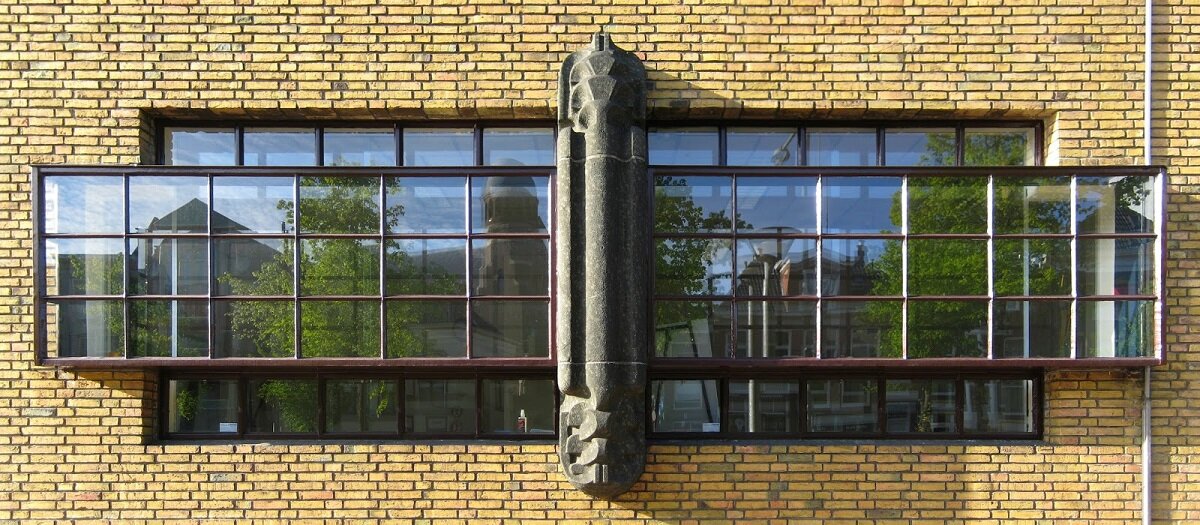#16144. Modernist Facade with Contrasting Sculptural Element

Before us is an impressive example of modernist architecture, where yellow brickwork serves as an expressive background for the central artistic element. The building facade features strict geometry and a minimalist approach characteristic of mid-20th century functionalism.
The dominant element of the composition is a large vertical sculptural detail made of dark stone, resembling an abstract human figure or totem, which literally "cuts through" the horizontal ribbon of windows. This sculptural form creates a dramatic contrast with the warm hue of the brickwork and the reflective surfaces of the glass elements.
The ribbon glazing with its clear geometric grid of frames represents a classic modernist technique, providing abundant natural light to the interior spaces. It's noteworthy how the architect uses the reflective properties of glass — the windows reflect surrounding buildings and greenery, visually integrating the structure into its urban context.
In your own facade design, this approach can be adapted through contrasting textures (such as brick and metal or stone), the use of a large artistic element as a focal point, and thoughtful placement of window openings that create rhythm across the facade. It's also important to consider the play of light and reflections, which brings even the most austere architectural forms to life.